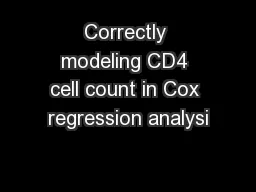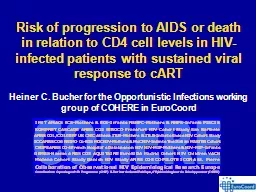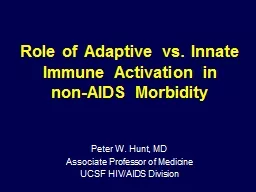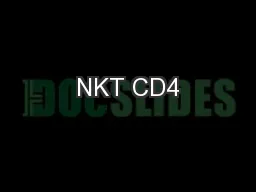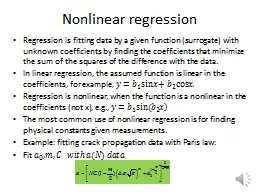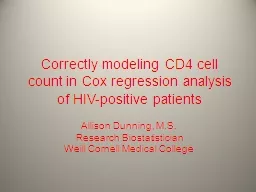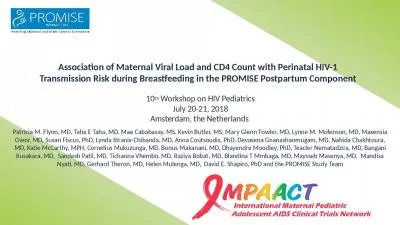PPT-Correctly modeling CD4 cell count in Cox regression analysi
Author : myesha-ticknor | Published Date : 2015-09-23
Allison Dunning MS Research Biostatistician Weill Cornell Medical College Outline Background Motivation Methods Data Management Results Conclusion Background Results
Presentation Embed Code
Download Presentation
Download Presentation The PPT/PDF document "Correctly modeling CD4 cell count in Cox..." is the property of its rightful owner. Permission is granted to download and print the materials on this website for personal, non-commercial use only, and to display it on your personal computer provided you do not modify the materials and that you retain all copyright notices contained in the materials. By downloading content from our website, you accept the terms of this agreement.
Correctly modeling CD4 cell count in Cox regression analysi: Transcript
Download Rules Of Document
"Correctly modeling CD4 cell count in Cox regression analysi"The content belongs to its owner. You may download and print it for personal use, without modification, and keep all copyright notices. By downloading, you agree to these terms.
Related Documents

